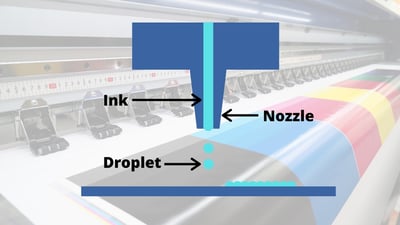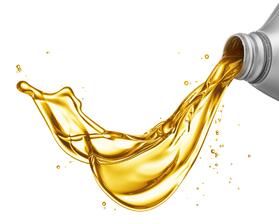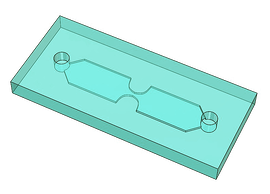Extensional, or elongational, viscosity is defined as the resistance of a fluid to extensional flow (flow through a field involving a change in cross-sectional area). Extensional viscosity is relevant when measuring any flow field involving a change in cross-sectional area and is therefore ideal for studying the complex properties of many fluids used in industrial applications. Extensional deformation and extensional shearing have a significant impact on certain industrial processes, such as fiber spinning, paint rolling, roll coating, inkjet printing, spraying, electrospinning, enhanced oil recovery, drag reduction, and food processing.
Because extensional flows greatly impact the behavior of polymer molecules and asymmetric particles, understanding extensional viscosity allows you to improve your industrial processes. With accurate data, you can gain a deep understanding of the composition of the fluid, predict the impact of that composition on your process, and optimize your process based on the characteristics revealed by the data.
Fiber Extrusion Spinnerets
"Spinning is a manufacturing process for creating polymer fibers. It is a specialized form of extrusion that uses a spinneret to form multiple continuous filaments. There are many types of spinning: wet, dry, dry jet-wet, melt, gel, and electrospinning." The first step in any spinning process is to convert the polymer being spun into a fluid state. Depending on the viscosity of the polymer and it's characteristic, you have to put the polymers in ideal conditions to dissolve properly. A thorough understanding of the extensional viscosity of your polymers will help optimize the processing parameters of your fiber spinning.
Paint Rolling
Thixotropy is a commonly observed rheological behavior in both ink and paint formulations. Thixotropy refers to time dependent shear thinning property of non-Newtonian fluids (Mewis 1979). This is a reversible process in which certain materials that are thick or viscous under static conditions, but become thinner or liquify when shaken, stirred, or otherwise disturbed. The materials then reset or return to their more viscous state when allowed to stand after a fixed amount of time. There is a rule of thumb in the paint industry that a viscosity of approximately 100 cps (1 P, 0.1 Pa•s) provides acceptable spraying, brushing, or roll coating. (American Coatings Association) Paint application is a high shear stress, high shear rate process. and viscosity affects ease of brushing, coverage, and tends to spatter of architectural paints. if you will be using a brush or roller, your paint will have a higher viscosity than if you are going to use a spray gun. Viscosity measures paint resistance to spreading, which “plays an important role in its application” (Zenith Home Finishes). The viscosity of your paints must be adjusted depending on the application method you plan to use.
Ink Jet Printer Nozzles
When working with inks viscosity this can have a significant impact on manufacturing. Surface tension and viscosity determine the print quality of inks, affecting ink droplet formation, and in turn, the quality of the resulting printout. Printout quality is especially important for printing processes such as inkjet printing of conductive inks for RFID (radio-frequency identification) which requires precise liquid dispensing and patterning. The viscosity of inks depends on the components of the ink, including resins, pigments, and binding agents. and temperature. Viscosity is also important to the functionality of your printing equipment. For example, highly viscous paints can clog and potentially ruin an inkjet nozzle. Due to the complexity of inkjet inks and the inkjetting process, viscosity must be measured over a wide range of shear rates to understand how your inks will behave during printing and to control the quality of your final product.
Enhanced Oil Recovery
Enhanced oil recovery (EOR) is "the extraction of crude oil from an oil field that cannot be extracted otherwise". EOR Techniques have been used to successfully extract crude oil from oil fields. According to the Energy Department's Office of Fossil Energy, EOR techniques have allowed "30 to 60 percent, or more, of the reservoir's original oil in place." There are many types of EOR techniques including polymer flooding - the process of injecting viscous fluid that assists in crude oil displacement. Tying the fluid mechanics method with EOR, different types of polymers are used in the polymer flooding process. Extensional viscosity measurements allow you to track the effects of mechanical degradation at various extensional and shear viscosity (Dupas et. al). Drag Reduction
Drag Reduction
Drag reduction is a physical phenomenon that causes friction to be reduced and fluid flow to be increased. Chemicals that reduce drag are known as drag-reducing agents (DRA). (Papavinasam, 2008) Extensional viscosity can help in identifying elongational flow regions within the pipe flow of your polymers.
Food Processing
Understanding the viscosity of food and beverage products helps in both development (texture, shelf stability, spreadability, squeezability, etc) and processability (can the products be processed on your existing lines). Thixotropy is no only commonly observed in ink and paint formulations, but also in food products, such as ketchup or cheese sauce. Accurately measuring the extensional viscosity of food products will ensure they will flow properly when shaken or agitated before returning to their more viscous state.
RheoSense, Inc. e-VROC™, the viscometer capable of measuring apparent extensional viscosity, measures the extensional flow of polymer solutions to help you understand and optimize your industrial processes. By monitoring the sample flow through a microfluidic contraction within the measuring cell, the system measures the pressure upstream and downstream of a contraction using the MEMS pressure sensors and registers changes in the flow, providing precise apparent extensional viscosity data. The fluid experiences shear flow in the straight channel and then an almost constant extension in the contraction zones as depicted in the figure above.
The fluid experiences shear flow in the straight channel and then an almost constant extension in the contraction zones as depicted in the figure above.
Want to learn more about extensional viscosity and the theory behind our flow channel designed to measure extensional viscosity? Download our webinar "Extensional Viscosity with e-VROC: Theory & Practice".


.png?width=300&name=Extensional%20Viscosity%20(Blood).png)

.png?width=400&name=Extensional%20Viscosity%20(Blood).png)